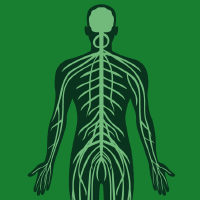Topic Menu
► Topic MenuTopic Editors



2. Center for Studies and Research in Cognitive Neuroscience, Department of Psychology, University of Bologna, Bologna, Italy


Emerging Translational Research in Neurological and Psychiatric Diseases: From In Vitro to In Vivo Models, from Animals to Humans, from Qualitative to Quantitative Methods 2.0
Topic Information
Dear Colleagues,
Translational research is one of the most essential but challenging areas of laboratory sciences when it comes to understanding the underlying pathomechanisms of neurological and psychiatric disorders. These challenges additionally arise when searching for new biomarkers and developing novel therapeutics. Furthermore, many branches of neuroscience can help us understand the underlying molecular factors and neural computations behind brain impairments and psychiatric disorders, as well as determining where and how to focus research and treatment. In vivo and in vitro disease models have been casting a light on the complex polygenic, multifactorial, and heterogenous disease mechanisms. Furthermore, emerging animal models are revealing the intriguing interaction of sex and aging with the pathogenesis of neuropsychiatric diseases; meanwhile, emerging research in patients has been paying closer attention to the heterogeneity of treatment responses that may help in developing personalized medicine. The diseases which translational research is applicable to include Alzheimer’s disease, Parkinson’s disease, multiple sclerosis, Huntington’s disease, amyotrophic lateral sclerosis, infectious prion disease, sequelae, stroke, HIV infection, and psychiatric disorders—including depressive disorder, bipolar disorder, substance abuse disorder, post-traumatic stress disorder, anxiety disorder, schizophrenia, somatic symptom disorder, autism spectrum disorder, hyperactive attention deficit disorder, and rare diseases. This Special Issue highlights the most recent developments in translational research in neurologic and psychiatric diseases. We cordially invite authors to contribute original research articles focusing on—but not limited to—the following:
- Etiology, pathogenesis, and progression mechanisms;
- Early diagnosis, including biomarkers, bioimaging, biosensors, and neuroimaging;
- Methodologies;
- Biomaterial biomedical research;
- Prophylactic, disease-modifying, and therapeutic strategies, and novel targets;
- Novel drug discovery and development, naturally driven biomedicines, natural bioactive molecules, and vaccines;
- Novel targets in various therapeutic areas: cardiovascular, vascular, hematology, oncology, neurology, orthopedics, dermatology, ophthalmology, and other peripheral systems;
- Biopharmaceutical biomedicine, biologics, biosimilars, nanobiotechnology, nanosimilars, nano biosimilars;
- Nanoscaffold implants (synthetic vascular graft);
- Bioimaging, gene therapy, vaccine, cell therapy, and tissue engineering;
- Predictors of clinical treatment responses;
- Computational neuroscience and computational psychiatry.
Review articles including expert opinions, systematic analysis, metanalysis, and other statistical and analytical methods are also welcome.
Dr. Masaru Tanaka
Prof. Dr. Lydia Giménez-Llort
Dr. Simone Battaglia
Dr. Chong Chen
Dr. Piril Hepsomali
Topic Editors
Keywords
- Alzheimer’s disease
- Parkinson’s disease
- mild cognitive impairment
- multiple sclerosis
- stroke
- depressive disorder
- bipolar disorder
- post-traumatic stress disorder
- anxiety disorder
- schizophrenia
- somatic symptom disorder
- autism spectrum disorder
- hyperactive attention deficit disorder
- learning disabilities
- acquired brain damage
- altered cognitive processes
- brain functional impairment
- neurocognitive disorders
- cognitive, behavioral, and functional disorders
- trauma; brain plasticity and connectivity
- non-invasive brain stimulation
- altered cognition
- rare diseases
Participating Journals
| Journal Name | Impact Factor | CiteScore | Launched Year | First Decision (median) | APC |
|---|---|---|---|---|---|

Biomedicines
|
4.7 | 3.7 | 2013 | 15.4 Days | CHF 2600 |

Brain Sciences
|
3.3 | 3.9 | 2011 | 15.6 Days | CHF 2200 |

Cells
|
6.0 | 9.0 | 2012 | 16.6 Days | CHF 2700 |

International Journal of Molecular Sciences
|
5.6 | 7.8 | 2000 | 16.3 Days | CHF 2900 |

Neurology International
|
3.0 | 2.2 | 2009 | 23.3 Days | CHF 1600 |

Pharmaceuticals
|
4.6 | 4.7 | 2004 | 14.6 Days | CHF 2900 |

MDPI Topics is cooperating with Preprints.org and has built a direct connection between MDPI journals and Preprints.org. Authors are encouraged to enjoy the benefits by posting a preprint at Preprints.org prior to publication:
- Immediately share your ideas ahead of publication and establish your research priority;
- Protect your idea from being stolen with this time-stamped preprint article;
- Enhance the exposure and impact of your research;
- Receive feedback from your peers in advance;
- Have it indexed in Web of Science (Preprint Citation Index), Google Scholar, Crossref, SHARE, PrePubMed, Scilit and Europe PMC.

